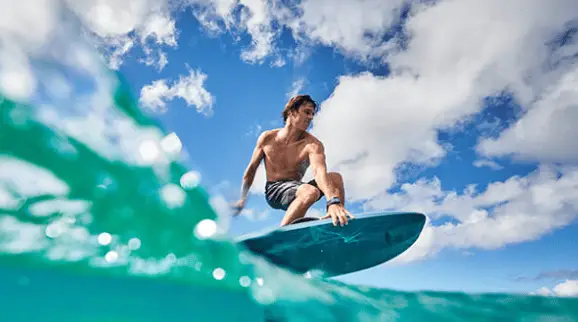Surfing fins, also known as surfboard fins, are crucial for determining how your board performs on the waves. They influence everything from maneuverability and speed to stability and control. With various types of fins available, it's essential to understand their differences to select the right fins for your surfing style and conditions. Here’s a comprehensive guide to the different types of surfing fins and how they impact your ride.
Improve your surfing with premium surfing fins from Tianhao Sports. Our fins are designed to deliver superior stability, speed, and maneuverability across all wave conditions and skill levels. Elevate your board's performance and experience top-notch surfing with our high-quality fins. Shop now!
1. Single Fins
Overview: Single fins are one large fin positioned in the center of the board. This setup is most commonly found on longboards and retro-style boards.
Characteristics:
- Stability: Single fins offer excellent stability, making them ideal for cruising and smooth turns.
- Traditional Feel: They provide a classic surfing experience with a slower, more controlled ride.
- Best For: Longboards, retro boards, and smaller waves.
Pros:
- Provides a smooth, stable ride.
- Ideal for laid-back, stylish surfing.
Cons:
- Less maneuverable compared to multi-fin setups.
- Not suitable for high-speed or aggressive turns.
2. Twin Fins
Overview: Twin fins consist of two fins positioned on either side of the board. This setup is popular in shortboards and is known for its playful, agile performance.
Characteristics:
- Agility: Twin fins offer quick, responsive turns and a loose feel on the water.
- Speed: They reduce drag, allowing for faster acceleration.
- Best For: Small to medium-sized waves, playful and trick-oriented surfing.
Pros:
- Enhanced maneuverability and speed.
- Fun and lively ride, ideal for tricks.
Cons:
- Can be less stable in powerful surf.
- Not ideal for high-speed or aggressive surfing.
3. Tri-Fins (Thruster)
Overview: The tri-fin setup, also known as the thruster, features three fins: one center fin and two side fins. This configuration is one of the most popular due to its balanced performance.
Characteristics:
- Versatility: Offers a blend of speed, control, and maneuverability.
- Stability: Provides good stability and grip, making it suitable for various conditions.
- Best For: A wide range of waves and surfing styles, from small to large surf.
Pros:
- Well-rounded performance for different conditions.
- Good balance between speed and control.
Cons:
- May not excel in extreme conditions or specialized surfing styles.
4. Quad Fins
Overview: Quad fins consist of four fins: two on each side of the board. This setup enhances drive and stability, particularly in powerful waves.
Characteristics:
- Grip: Offers excellent grip and control, reducing slide in high-speed turns.
- Speed: Provides substantial drive, making it ideal for fast, powerful surfing.
- Best For: Large, powerful waves, high-speed surfing, and aggressive maneuvers.
Pros:
- Superior stability and grip in powerful surf.
- Increased speed and drive.
Cons:
- Can be less maneuverable in small, slow waves.
- May feel too stiff for some surfers.
5. Five-Fin Setups
Overview: Five-fin setups allow surfers to use different fin configurations by adding or removing the extra fins. Typically, these setups feature a combination of a central fin with two side fins and two smaller rear fins.
Characteristics:
- Customizability: Offers the option to switch between tri-fin, quad, or five-fin setups based on conditions and preferences.
- Versatility: Adapts to various wave conditions and surfing styles.
- Best For: Surfers who want flexibility and the ability to fine-tune their board’s performance.
Pros:
- Versatile and adaptable to different conditions.
- Ability to experiment with different fin configurations.
Cons:
- Can be more complex to set up and adjust.
- Additional fins may add weight and drag.
6. Flex Fins
Overview: Flex fins are designed with varying degrees of flexibility, often featuring a softer tip and a stiffer base. They are available in various setups, including single, twin, and tri-fins.
Characteristics:
- Flexibility: Provides a different feel compared to rigid fins, offering a more dynamic and responsive ride.
- Performance: Ideal for surfers who want a combination of speed and maneuverability with a bit of give.
- Best For: Surfers looking for a blend of control and flex in their ride.
Pros:
- Enhanced responsiveness and maneuverability.
- Comfortable ride with a touch of flexibility.
Cons:
- May lack the firmness needed for high-speed surfing.
- Can be less stable in larger surf.
7. Fin Materials
Overview: Surfing fins come in various materials, each affecting performance differently. Common materials include fiberglass, carbon fiber, and plastic.
Characteristics:
- Fiberglass: Offers a good balance of performance and durability. Commonly used in high-performance and traditional fins.
- Carbon Fiber: Lightweight and stiff, providing excellent drive and responsiveness. Ideal for high-speed and aggressive surfing.
- Plastic: Cost-effective and durable but can lack the performance qualities of fiberglass or carbon fiber.
Pros and Cons:
- Fiberglass: Durable but can be heavier.
- Carbon Fiber: Lightweight and high-performing but more expensive.
- Plastic: Affordable but less responsive.
Conclusion
Understanding the different types of surfing fins and their characteristics can significantly impact your surfing experience. Whether you’re looking for stability, agility, or versatility, the right fins can enhance your performance and enjoyment on the waves. By considering your surfing style, wave conditions, and personal preferences, you can select the ideal fins to match your needs and make the most out of every session.





